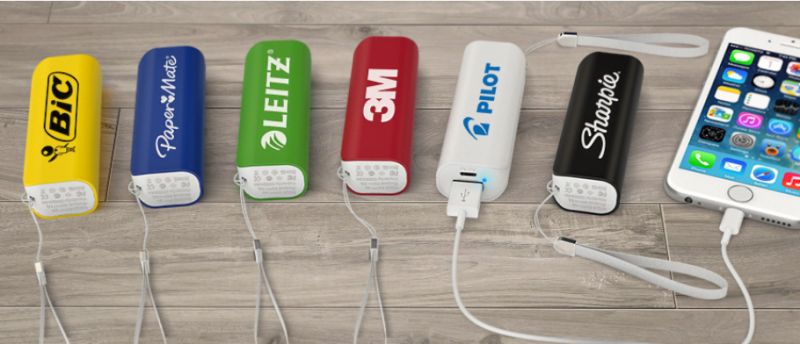Power banks do so many great things for humanity: they give us the freedom to bring our devices outside of civilized areas (a.k.a. places with outlets) on adventures; a way to keep some charge while running errands; for social activities; and even have the potential to save lives during natural disasters and power outages.
So, how long do power banks last? In short: it’s complicated. This is because the longevity of a power bank is determined by both its quality and your usage of it.
Before you scroll down to search for the short answer, here it is: most power banks will last, on average, anywhere from 1.5-3.5 years, or 300-1000 charge cycles.
Yes, that’s not much for a “simple answer”. So, if you want to learn more about how to make your power bank last longer and/or how to choose the highest quality power banks, then read on!
How a Power Bank/Portable Charger Works?
Your actual power bank is inside the hard shell case that it comes in. Put simply, the USB cable is utilized by the power bank to transfer power that was stored in the battery when it was charged to your phone or device through its microUSB cable.
There are other things inside that hard case like a circuit board for safety, but in short: it’s a rechargeable battery.
There are two main battery types included in power banks and varying degrees of capacity and voltage, and all can affect the life of your power bank in ways we’re about to uncover.
How Long Does a Power Bank Last? [Life Expectancy Based on Different Scenarios]
Each power bank, much like your smartphone’s battery, begins with a limited number of full charging cycles that determine its lifespan. The longevity of your power bank is dependent on a number of key factors. Things that affect power bank potentiality include how often you charge it, the quality and type of power bank you own, and how you use it.
For instance, the more often you’re using your power bank to charge your device(s), the shorter the life in terms of time; but you can still get the same number of charge cycles as someone who uses their power bank less often.
Duration of Charging.
A good average number of charges a power bank will last is around 600 – but, it could be more or less (up to 2,500 in the best cases!) depending on both how you charge it and the power bank itself.
A full power bank charging cycle (when you plug the power bank into the wall to charge) is 100% to 0% charge, then back to 100% – that’s what the 600 estimate is referring to. So, because you only charge your power bank part way each time (which is the correct and best usage – more on this in a bit), this contributes to the full cycle, but each partial charge does not constitute a full cycle.
Some power banks have a larger battery capacity, which will mean you’ll get more charge cycles and a longer life for the power bank.
Each time a cycle is completed, the power bank has some overall loss of quality in its ability to charge. That quality slowly depletes over the life of the product. Lithium polymer batteries are better in this aspect.
Power Bank Quality And Type.
The average lifespan of a power bank is usually between 3-4 years, and will hold charge for around 4-6 months on average, which will start out a bit higher and experience a 2-5% loss in overall quality each month, depending on the original quality and use of the power bank.
The length of a power bank’s life will be determined by a number of factors related to its make and quality, as well as usage. These include:
Battery capacity – high to low
The power bank’s battery will be either lithium ion or lithium polymer. Lithium ion, the oldest and most common battery type, has a built-in circuit that controls the power flow from the battery to your device to protect the device from overcharging and/or overheating (this is the type your phone probably has). Lithium polymer, on the other hand, does not heat up so does not need a circuit, though most will come with one to detect other issues for safety. Lithium polymer is more lightweight and compact, it’s stronger and doesn’t leak electrolytes as often.
Keep in mind that not all power banks will disclose what type of battery they use. CustomUSB power banks are made with lithium polymer batteries and include a circuit to detect things like electrostatic discharge and overcharging.
Quality of build/materials
Look for a power bank that has a high quality build, otherwise the life cycle of the product will be much shorter. Look for a reputable company that uses high quality materials and has a decent warranty, which protects you but also shows their level of confidence in their own products. Most power banks will come with a warranty of 1-3 years. CustomUSB has a lifetime warranty.
Capacity of the power bank
You will need a power bank with higher capacity for some devices like laptop computers and tablets because they have larger batteries. This will affect the life of the power bank depending on the size, because it may take up more of the power bank’s charge capacity and take it through more rounds to charge these larger items. Phones might also have varying capacities depending on their age.
Capacity is measured in milliamp hours (mAh). So, for example, if your phone has a capacity of 2,716 mAh (like the iPhone X), and you choose a power bank that has 5,000 mAh, you’ll get two full phone charges before having to recharge the power bank.
You’ll need a power bank with a higher capacity than the device(s) you’ll be using with it.
Bringing it all together
Remember how a power bank with more mAh can charge your phone through more cycles before it needs to be charged, therefore meaning it will have a longer life? Well, you want to also mix the mAh factor with the others. If you have a lithium polymer battery, for instance, you’ll extend the life of the product more because it doesn’t heat up and doesn’t lose as much quality each month. Then, if the product is made with high quality materials and is from a reputable company, it will last longer.
For example, this PowerTile charger is 5,000 mAh, has a lithium polymer battery that can be charged and discharged 1000+ times while retaining near 100% level charge capacity, and is made with high quality materials, meaning it is likely to last longer than a low quality product with a lithium ion battery that may have more mAh.
Use With Caution.
When it comes to the longevity of your power bank, you play a role in how much you’ll get out of this handy external battery – so treat it well! Here are some do’s and don’ts for your power bank:
Do charge the power bank fully when it’s brand new. It’s best to start it out at full charge.
Do charge your power bank right after each use. This keeps it from hitting 0 and ready to charge your devices when you need it.
Do charge unused power banks periodically to protect them from damage due to not being used.
Don’t use your power bank in high humidity. Keep it dry all the time.
Don’t place power banks in a bag or pocket near any other metal objects, like keys, which can cause short-circuiting and damage.
Don’t drop your power bank. This can damage the circuit board or the battery inside. Power banks need to be handled with care if you want them to last a long time.
Post time: Aug-17-2023




